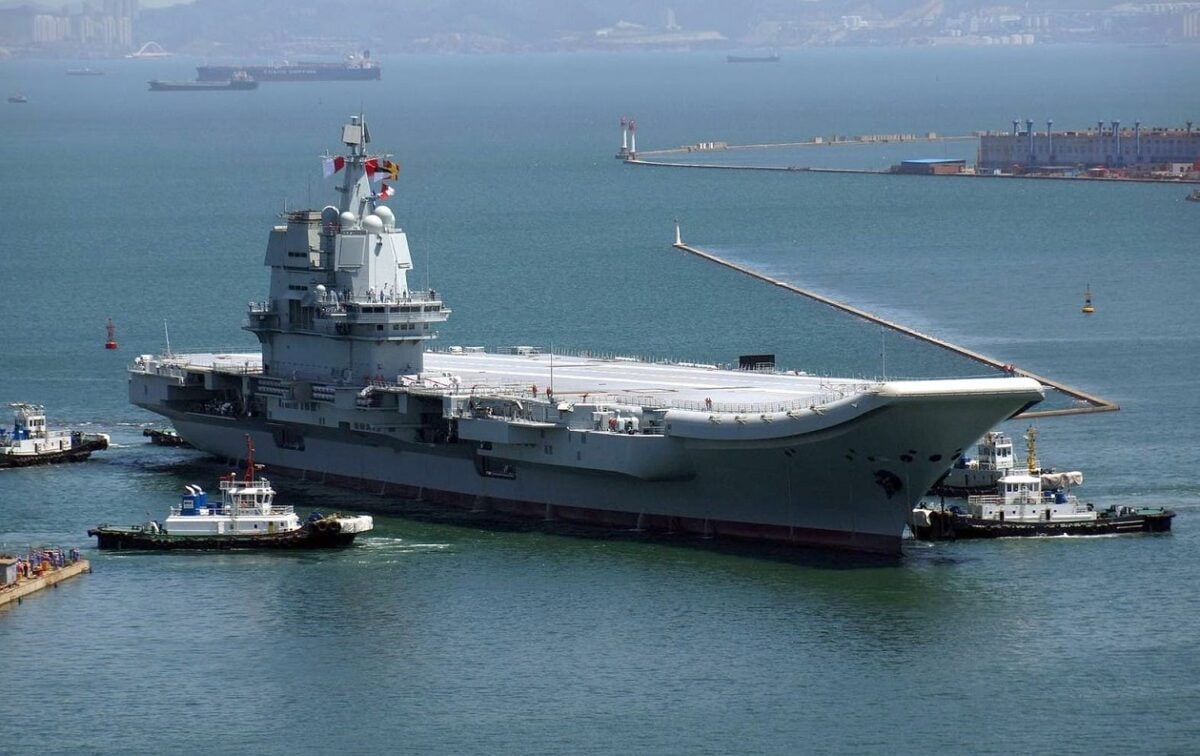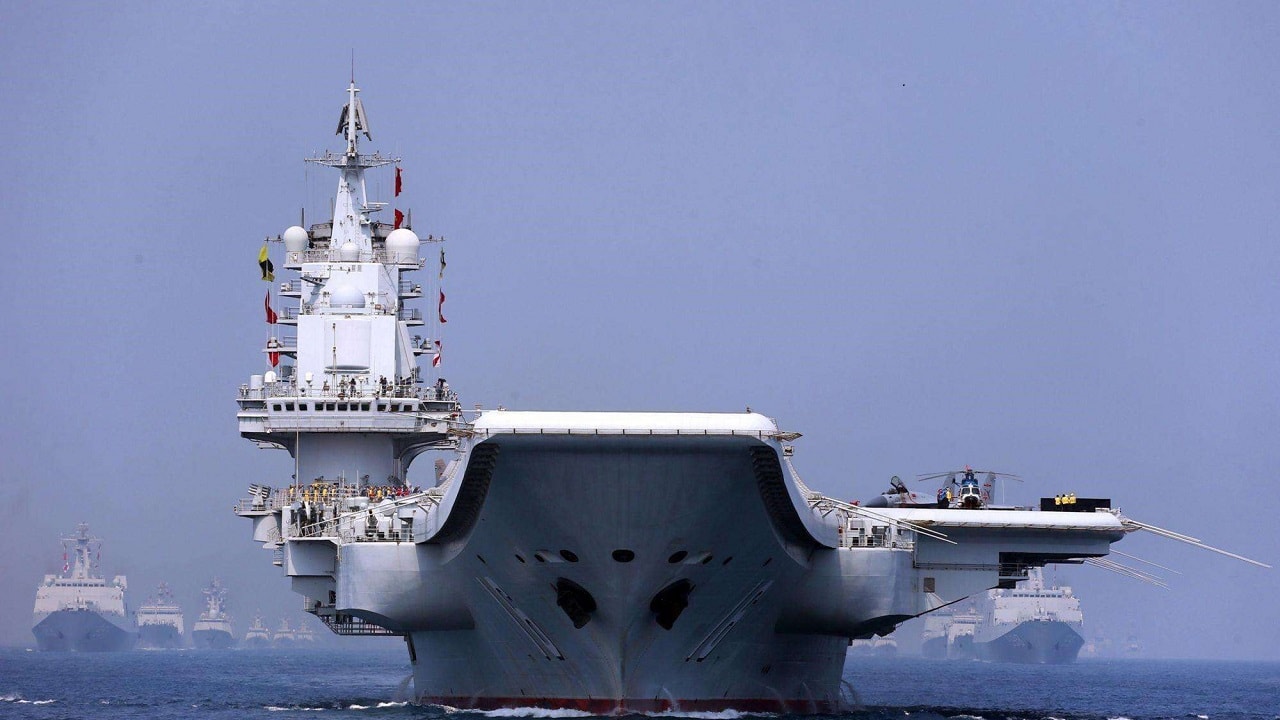Aircraft Carriers are a Big Part of China’s Navy Masterplan: Earlier this summer, the People’s Liberation Army Navy (PLAN) launched its third aircraft carrier, the 80,000-ton Type 003 Fujian, the largest warship built by the People’s Republic of China to date. However, this month, Beijing has been focused on the 10th anniversary of the commissioning of its first carrier, the Type 001 Liaoning.
Though the Type 001 was rebuilt from the hull of the incomplete Soviet-era “aircraft-carrying cruiser” Varyag, which had been sold by the government in Ukraine to China following the dissolution of the Soviet Union, it was still a great leap forward for the PLAN. The carrier served as a crucial stepping stone and served as a test bed for carrier-based aviation, and to mark its decade in service, the warship took part in recent exercises “fully loaded” with twenty-four J-15 “Flying Shark” fighter jets, two Z-8 helicopters, and a Z-9 helicopter on its flight deck.
According to observers, it was the largest number of combat aircraft on the carrier to date and was meant to demonstrate the growing capabilities of the PLAN’s naval aviation.
“Today’s progress in building China’s aircraft carrier fleet would not be possible without the endeavor of the entire country. In just 10 years, we have achieved the goal of the Liaoning aircraft carrier fleet navigating in the sea with combat capacity greatly improved and explored an aircraft carrier development path with Chinese characteristics,” Ma Chao, head of the air support department of the aircraft carrier Fujian, told the China Global Television Network (CGTN).
The PLAN has made significant progress in carrier operations in the past 10 years, including a 2017 successful nighttime launch and recovery of aircraft from the Liaoning for the first time.
“The breakthrough in nighttime techniques and the mastery of nighttime landing means we are capable of performing tasks in an all-weather manner, particularly at night and in complicated weather conditions. With all-weather combat advantages, we will have greater initiative in future wars,” suggested Xu Ying, deputy captain of the aircraft carrier Shandong.
More Aircraft Carriers Coming Soon for China?
A recent report from the U.S.-based Center for Strategic and Budgetary Assessment, which used a computer-assisted Strategic Choices Tool, found that “the PLA has the resources necessary to continue its modernization over the 2020s.”
Based on the data in its “China Choices” study, the think tank warned that the PLAN possesses the resources to field up to five aircraft carriers and 10 nuclear ballistic missile submarines by 2030. However, all three current carriers – and likely the fourth carrier that China is likely building, will be conventionally-powered.
By contrast, the United States Navy has a fleet of eleven nuclear-powered carriers, including ten Nimitz-class and the lead vessel of the new Gerald R. Ford-class, which is currently being readied for her maiden deployment by the end of this year. The United States Navy also is on track to replace its aging Nimitz-class with the more advanced carriers on a one-for-one basis over the coming decades.

China Type 002 Aircraft Carrier. Image Credit: Creative Commons.
China is also not alone in developing carriers. India recently launched its new flagship, INS Vikrant, the first domestically-built carrier and largest warship produced in the subcontinent. In addition, Japan is refurbishing its helicopter flattops to operate with the Lockheed Martin F-35B, while South Korea recently changed course with its carrier plans and could have a medium-sized carrier in service by the mid-2030s as well.
Expert Biography: A Senior Editor for 1945, Peter Suciu is a Michigan-based writer who has contributed to more than four dozen magazines, newspapers, and websites with over 3,000 published pieces over a twenty-year career in journalism. He regularly writes about military hardware, firearms history, cybersecurity, and international affairs. Peter is also a Contributing Writer for Forbes. You can follow him on Twitter: @PeterSuciu.

